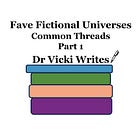I previously wrote about how identifying fictional universes we love and their commonalities can help us move towards living lives that satisfy our souls. I strongly recommend taking five minutes to enjoy some Bob Marley here – go on, have a wee dance. Grab a loved one if they’re nearby and receptive to impromptu dance sessions.
After coming across this idea, I quickly realised that the first main commonality between my special fictional universes was a close-knit community that interacts on a daily basis.
Soon after, my brain prompted me to go and look at notes I’d made in the summer of 2019 on the book A Pattern Language.
This is a book I first discovered through my writerly master Gretchen Rubin.
She talked about it on her podcast Happier with such passion that I sought it out and discovered that Glasgow Uni Library – where I worked at the time (not in the library, but as a widening participation tutor if anyone cares) – had a copy, so I checked it out and spent weeks taking detailed notes on its fascinating pages.
To put it simply, I would describe A Pattern Language as a book that is made up of a long, insightful, often easily implemented list of features of cities, neighbourhoods, and homes – both inside and out – that feed our souls. When I bought the house we currently live in, I used what I’d learned from it to help me design both the interior and the gardens (I say gardens – the front garden is basically a driveway and the back is a postage stamp but nevertheless).
I rifled through my old notes and finally found what I’d been looking for – the second and final piece of the puzzle – The Home Workshop.
“We imagine a society in which work and family are far more intermingled than today; a society in which people work for themselves, alone and in small groups, with much more relation to their immediate surroundings than they have today. In such a society, the home workshop becomes an integral part of every house; as central to the house's function as the kitchen or the bedrooms… There is something to be gained, both for the worker and the community, by enlarging the connection between the two… Children especially are enlivened by this contact.”
In all of my beloved fictional universes, while the characters have something that calls them to action each day, a purpose by which to occupy themselves, which in some cases is paid work, it is completely intertwined with their close-knit community. They don’t have to leave their friends and family behind to go to work in an office or factory miles away. Even if they do work somewhere that isn’t their home, their loved ones make regular appearances, and there is a sense that they are in charge – they are not at the mercy of their employer. There is also an atmosphere of safety and security – a life that cannot be upended by outside forces…
Please tell me what insights you’ve had in relation to fictional universes. Anyone else a fan of A Pattern Language?







